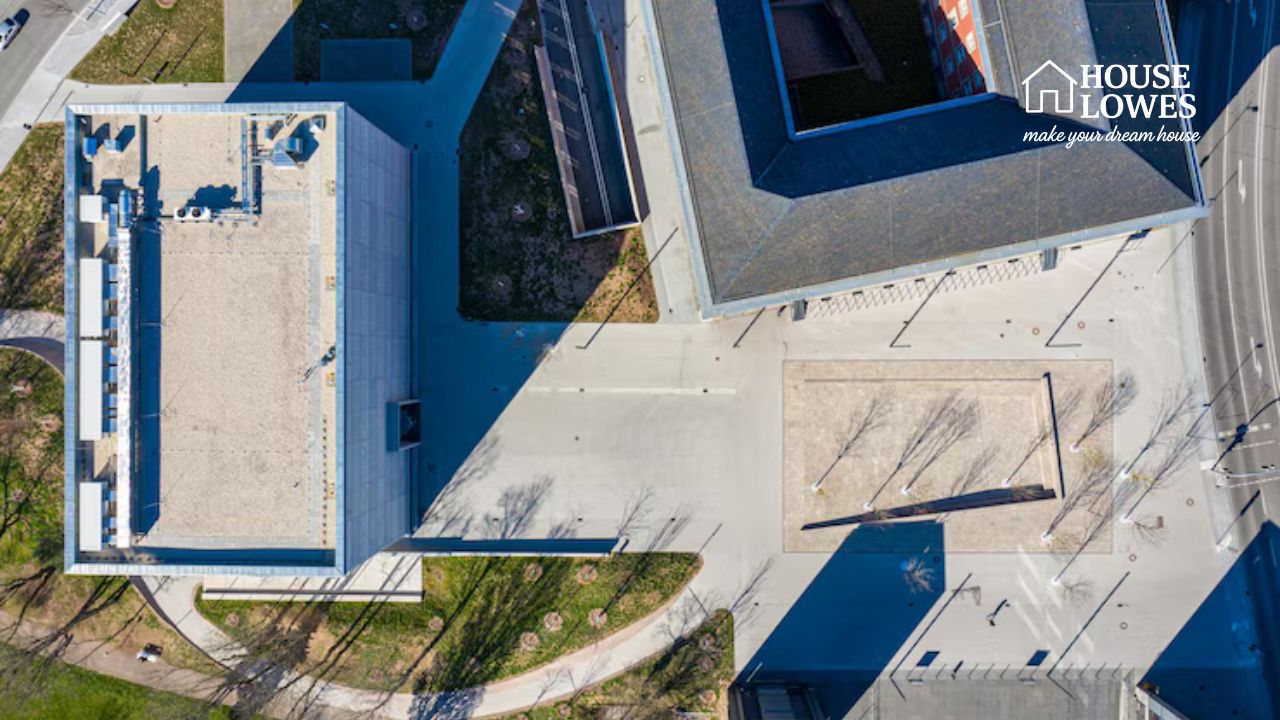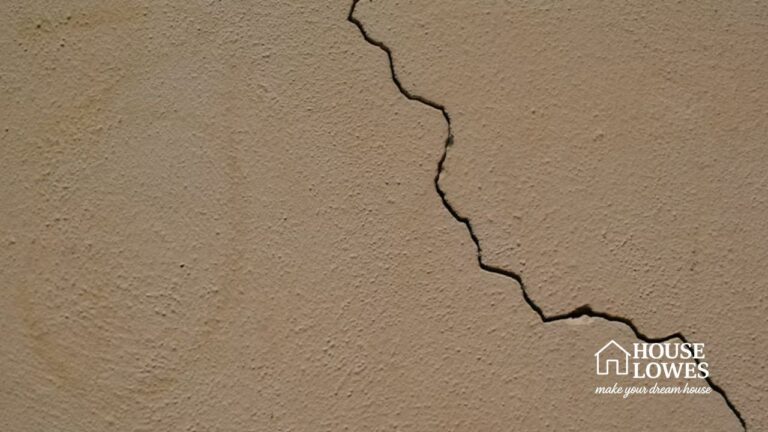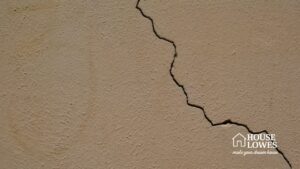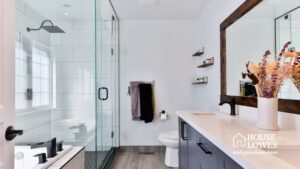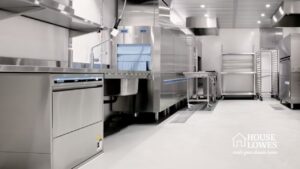
Flat roofs have been the most common type of commercial roofing for decades, and there are several compelling reasons for this. Unlike pitched roofs, which are mostly found on residential buildings, flat roofs fulfill the requirements of commercial spaces. Weather Shield Roofing Systems argues that flat roofs are not only simpler architecturally, but also cheaper to build and maintain than large scale buildings. Knowing these benefits can help the owners of businesses and managers of facilities make informed decisions regarding the commercial roofing systems of their buildings.
Quick and Simple Roof Installation
Commercial business owners have a preference for flat roofs because of ease in their installation. A pitched roof comes along with an assortment of frameworks constructed with timber. On the other hand, flat roofs use far fewer materials. Not only are flat roofs easier to build, their construction is quicker. Such efficiency not only reduces expenses associated with labor, but saves on time as well. This is an important factor for companies looking to reduce operational downtimes during building or roof repairing projects.
Extra Space for Equipment and Utilities

The use of commercial flat roofs has a great advantage in spatial optimization for critical equipment and systems due to HVAC units integration. HVAC units will need to be mounted on the building’s exterior for high-demand environments. This, in turn, preserves valuable space within the building’s interior. Moreover, it makes maintenance work easier for technicians. Trade procedures can now be performed without business interruptions. Besides, flat roofs provide optimal spaces for solar panels that capture sunlight, which boosts energy efficiency, and lowers utility bills while supporting green goals.
Enhanced Energy Efficiency
An important advantage of flat commercial roofing is their installation of cool roofing materials. These materials are highly reflective and reduce the absorption of sunlight. Maintaining interior temperatures also positively adds to a building’s air conditioning system’s efficiency, thereby reducing cooling costs.
Furthermore, the installation of cool roofs means that HVAC systems no longer have to work as hard to maintain comfortable indoor temperatures and increases the units’ efficiency. Reduce strain also lowers costs, while infrequent use during hot months when compared to relied upon months increases the expected lifespan of maintenance and roof repairing for costly HVAC units.
Advanced Drainage Solutions for Large Roofs
As with many other types of commercial buildings, the average 19,000-square-foot flat roofed structure requires efficient drainage to accommodate heavy rainfall. Due to sloped roofs’ limited ability to incorporate intricate drainage systems, they are at a disadvantage as they cannot accommodate internal piping or rooftop pipes that divert water from the structure.
Due to their larger spatial area, commercial roofs tend to accumulate a considerable amount of water which can cause pooling and backlogs, leading to significant damage over time. Flat roofs solve this challenge by eliminating the need for traditional gutters with built-in systems that effectively prevent ponding while redirecting water into channels, helping improve the lifespan of the roof and minimizing the need for frequent roof repairs.
Safe and Convenient Roof Access
Flexibility in flat roofing accessibility stands out as a pronounced advantage for commercial roofing. Unlike pitched roofs where access is complicated and requires safety harnesses, flat roofs present a safer and more straightforward option. Maintenance crews can easily complete routine inspections, cleaning, or repairs on the roof without the risk of steep slopes, scaffolding, or harnesses.
For business owners and facility managers, flat roofs streamline building maintenance from a proactive and efficient perspective. The reviewed tasks such as HVAC unit maintenance, assessing for debris, or evaluating the roof visually for damage can be performed with minimal safety concerns. Increased maintenance frequency and ease helps preserve the roof’s structural integrity and performance, reducing potential extensive damage and lowering long-term roof repair costs.
Budget-Friendly Roofing Solution
One of the most amazing reasons commercial roofing projects favor flat roofs is their cost effectiveness. As per the Roofing association, the installation cost of flat roofs is lesser when compared to pitched roofs. The implementation phase is simpler and less time-intensive, less manpower is required, and less materials result in more streamlined construction.
Financially speaking, this can also be beneficial when dealing with large commercial spaces which translates to big savings. In contrast to pitched roofs, flat roofs utilize single ply membranes. These materials substantially lowered the cost compared to pitched roofs which used separate tiles or shingles due to the presence of large sheets.
Durable Lifespan of Flat Roofs
With the right maintenance practices, flat roofs possess a durable lifespan closer to – if not better than – pitched roofs. The durability of a flat roof is directly proportional to the materials used and the maintenance provided to it, in this case, patently flat roofing such as EPDM, Built-up roofing, and modified bitumen are some of the materials that are known for their tenacity.
Although flat roofs are usually cheaper than pitched roofs, this does not mean they have a shorter lifespan. For example, built-up roofing and modified bitumen systems are known to last for decades when properly maintained. Furthermore, flat roofs can be supplemented with advanced roofing technologies like spray polyurethane foam and thermoplastic polyolefin (TPO), which offer excellent thermal insulation and weather resistance, thus prolonging their functional lifespan.
The Most Common Types of Flat Roofs
Flat roofs have become an inherent feature of many commercial buildings because of their ease of installation and overall cost-effectiveness. Let’s look at some common flat roofing types:
TPO Roofing
Thermoplastic Olefin (TPO) single-membrane roofing is considered both a cost-effective and energy-efficient option. TPO roofs are normally produced in white and gray, making them highly reflective, which greatly reduces cooling costs and energy expenditure. TPO roofs are favored for their ease of installation and durability, which is why many commercial buildings use them.
PVC Roofing
Compared to other materials, PVC roofing systems are well-known for their resistance to chemicals, fires, and winds proving their durability. Even though these roofs are more costly than TPO options because of the long-term savings from less maintenance and longer lifespan, they remain cost-effective. PVC roofing is also eco-friendly raw material, allowing them to last up to 20 years with proper maintenance.
SPF Roofing
SPF or Spray Polyurethane Foam roofing applies liquid chemical compounds to the roof which solidify forming an insulative layer. SPF roofs are also known for their external protection and are great for shielding UV rays and other weather elements. Their unique seamless nature helps reduce the chances of leaky roofs and makes them great for most flat surfaces and increase commercial versatility.
Modified Bitumen Roofing
Bitumen roofing is formed by adding asphalt and rubber or plastic which greatly enhances flexibility and strength. fiberglass reinforced this durable membrane giving flat roofs a waterproof barrier. Similar to built-up roofing, modified bitumen comes with modern upgrades increasing their lifespan and resilience.
EPDM Rubber Roofing
EPDM rubber roofing or simply rubber roofing is created from synthetic rubber, a highly durable material. EPDM is known for its longevity and weather resistance. It’s an option often chosen for commercial roofing. This type of rubber roofing is relatively simple to put on and keep in good condition over the long term.
Conclusion
Flat roofs are often seen in commercial buildings because they can accommodate equipment placed on the roof, are energy-efficient, and have lower installation and maintenance costs. Also, there is a variety of materials used such as TPO, PVC, SPF, Modified Bitumen, and EPDM. These options allow building managers to select the best compromise based on their priorities whether it is durability, budget, or energy efficiency. Furthermore, flat roofs make it easy to carry out roof repairs thanks to their design, which enables quicker identification and resolution of problems like leaks or surface damage. This makes flat roofing practical for commercial properties looking to balance functionality and maintenance with long-term performance.
FAQs
Why do commercial buildings usually have flat roofs?
The ease of use offered by flat roofs makes them quite favorable for commercial structures. They not only lower operational costs and are less expensive to install but also provide space for utility systems such as Heating Ventilation and Air Conditioning (HVAC). Flat roofs also allow easy access and maintenance as well as efficient drainage and energy.
What benefits do flat roofs provide for energy efficiency?
Other than lowering operational costs as a consequence of reduced indoor cooling requirements, flat roofs significantly enhance energy efficiency by utilizing reflective materials, cool roofing options, and reducing heat absorbance. In addition, flat roofs make the installation of solar panels less complicated.
Do flat roofs require a lot of maintenance?
Unlike sloping roofs, flat roofs are much easier to access and inspect. While flat roofs may require regular maintenance to check for damage and clear debris, issues such as roof coatings can fix minor problems while protecting and extending the roofing’s lifespan, ensuring structural integrity over time.
What are some common materials used for flat roofs?
The common materials include EPDM rubber, built-up systems, modified bitumen, SPF roofing, TPO, and PVC. Each material possesses certain characteristics that offer a wide range along commercial needs in regard to durability, energy efficiency, and cost.
Admin Recommendation
Durable & Stylish Bronze Metal Roof – Your Complete Guide

